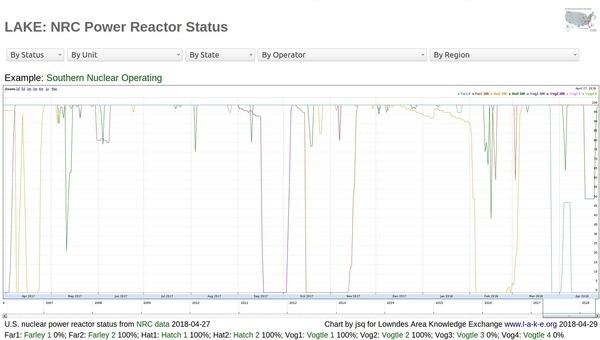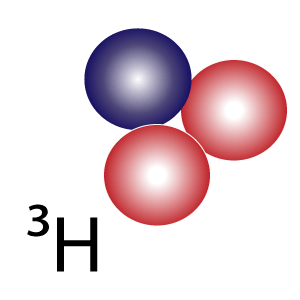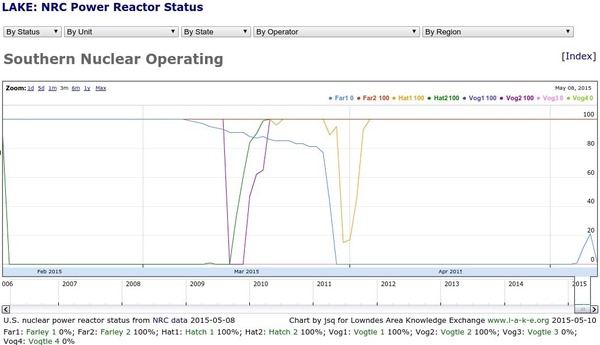It doesn’t take a tsunami to take down Fukushima: rats can do it repeatedly.
Mainich.jp, and
Google Translate version,
Inspection and rat carcasses found cooling system stop: Unit 2 Fukushima Daiichi nuclear power plant
(23 minutes 15:22 April last update) 01 minutes 13:22 April Mainichi Shimbun in 2013

From state = Fukuichi live camera of Fukushima Daiichi nuclear power plant of 50 at around 2:00 pm
|
The 22nd, TEPCO announced that it had stopped the cooling system of
the spent fuel pool of Unit 2 Fukushima Daiichi nuclear power plant.
Since the corpse of two dogs rat is found inside the transformer in
the outdoors, I will check the equipment.
According to the Nuclear Regulatory Agency and Tokyo Electric Power,
15 at around 10:00 am the same day, workers found a dead rat in the
two animals terminal near the pool cooling transformer inside.
Remove the mouse, stop the power for inspection of equipment 35 at
around 11:00 the same. expected start is 3 to 4 hours later.
Water temperature of the pool of power stop time is 13.9 degrees.
There is enough time to rise up to 65 degree of operational safety,
TEPCO has “no problem. Administrative stopped just in case for
inspection” he said. [Torii true flat]
Reuters’ version,
Fukushima nuclear cooling system offline for 3rd time in 5 weeks,
adds:
Last month, a 29-hour power supply halt affecting nine facilities,
including four spent fuel pool cooling systems, was caused by a rat
touching exposed wires in a temporary switchboard, triggering a
circuit breaker.
In early April, the No.3 unit’s spent fuel pool cooling system
stopped, after workers appeared to have had inadvertently caused a
power outage when they were trying to install a net to keep small
animals from crawling into the reactor building. (Reporting by Risa
Maeda; Editing by Chris Gallagher)
Apparently that net didn’t work.
Should we trust our safety to nuclear plants that can be shut down by rats?
The
tritium-leaking
reactors at Plant Hatch at Baxley
are the same design as at Fukushima.
Former U.S. NRC Chairman Jaczko says
we should phase them all out while
former Indian Atomic Energy Regulatory Board Chair Gopalakrishnan says the reactors currently building in India, already three years behind schedule and now found to incorporate numerous defects and deficiencies amid gross lack of transparency, must be stopped.
We know a better way:
solar and wind power.
Let’s get on with that.
-jsq
Owed to Masaichi Shiozaki.













